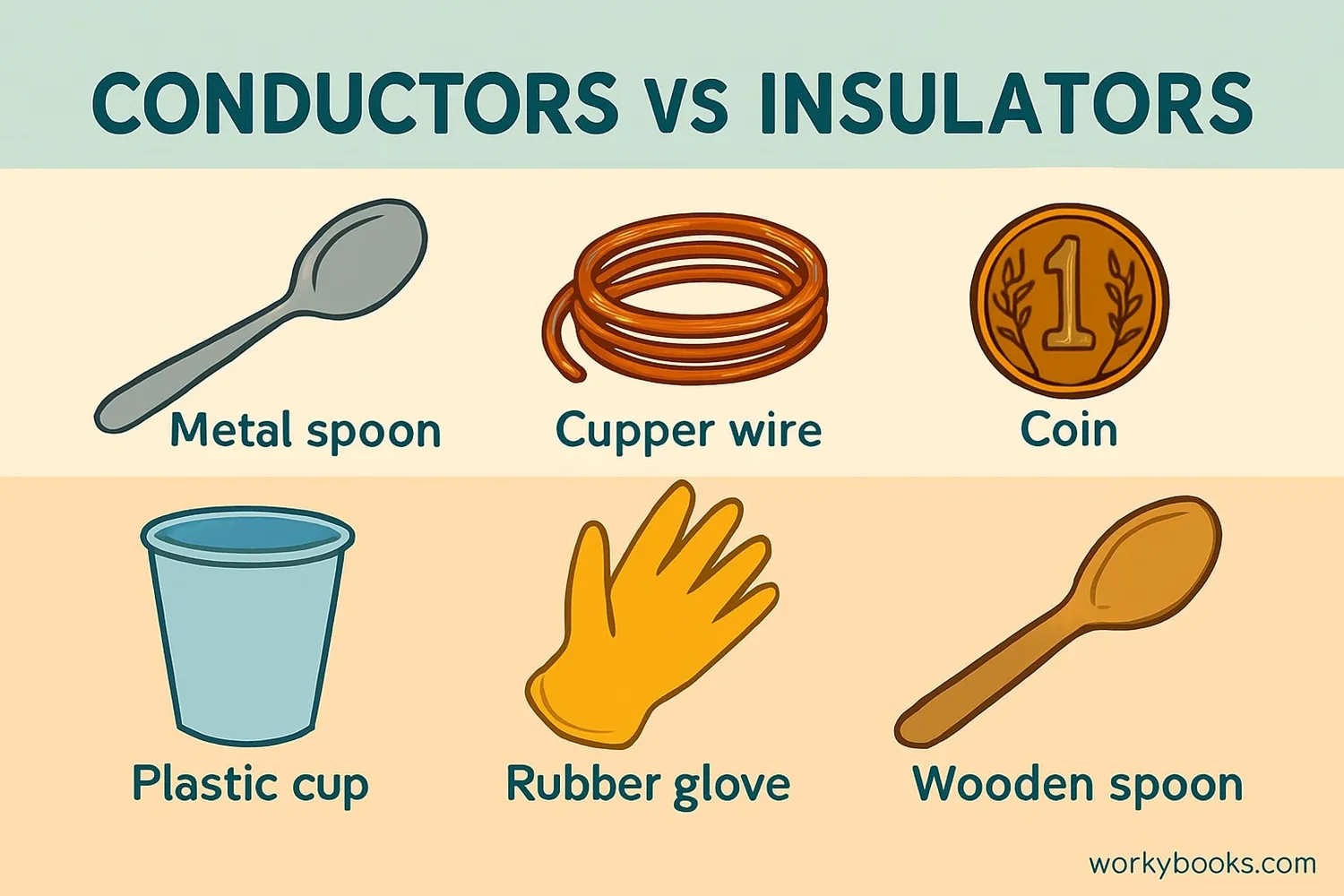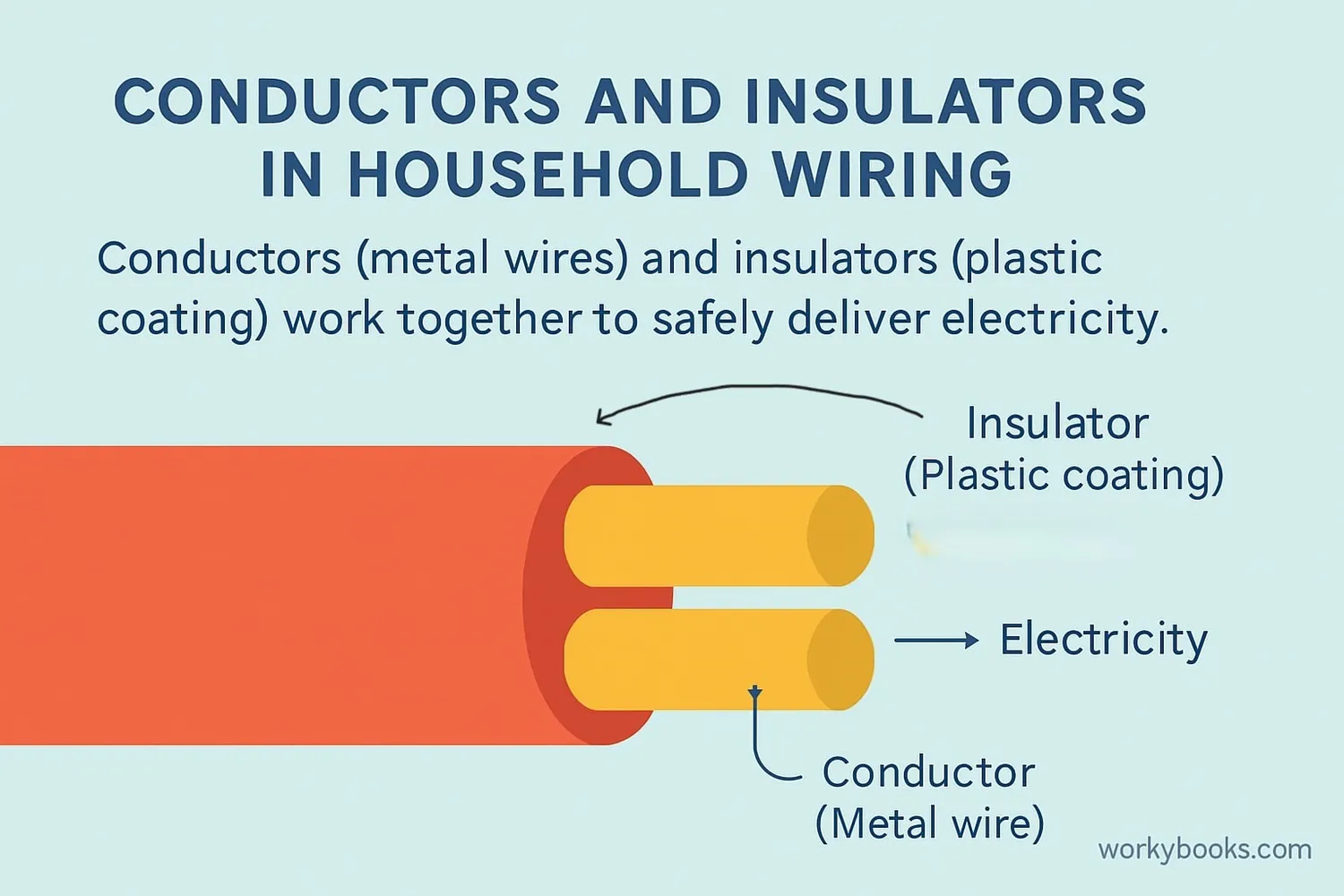Conductors and Insulators - Definition, Examples, Quiz, FAQ, Trivia
Discover how electricity flows through different materials!
What Are Conductors and Insulators?

Conductors are materials that allow electricity to flow through them easily. They have electrons that can move freely when electrical energy is applied. Think of them as electricity highways!
Insulators are materials that resist the flow of electricity. They have electrons that are tightly bound and don't move easily. These are like electricity roadblocks!
Key Difference
Conductors let electricity flow through them, while insulators stop electricity from flowing.
How Conductors and Insulators Work

The difference between conductors and insulators comes down to their atomic structure:
Conductors
Have loosely bound electrons that can move freely between atoms when voltage is applied
Insulators
Have tightly bound electrons that resist movement even when voltage is applied
Conduction
When electrons move from atom to atom, they carry electrical energy
Resistance
Insulators have high resistance to electron flow
Electron Movement
In a conductor, electrons move at about 1-2 cm per hour - slower than a snail! But the electrical signal travels at nearly the speed of light.
Examples of Conductors and Insulators

Let's look at common materials that conduct electricity and materials that insulate against it:
| Conductors | Insulators |
|---|---|
| Silver (best conductor) | Rubber |
| Copper (used in wires) | Glass |
| Gold (electronics) | Plastic |
| Aluminum (power lines) | Wood |
| Iron (steel structures) | Ceramic |
| Water (with minerals) | Dry air |
| Human body | Porcelain |
Safety First!
Electrical wires use copper (conductor) inside and plastic/rubber (insulator) outside. This lets electricity flow where we want it while keeping us safe!
Why Conductors and Insulators Are Important

Conductors and insulators work together to make our electrical world safe and functional:
Electrical Systems
Conductors carry electricity to our homes and devices
Safety
Insulators prevent shocks and short circuits
Electronics
Circuit boards use both to control electricity flow
Without this important combination:
• Electrical devices wouldn't work properly
• We'd risk electric shocks every day
• Energy would be wasted through unintended paths
• Modern technology couldn't exist
Conductors and Insulators Quiz
Test your knowledge with this quiz! Answer all 5 questions to see how much you've learned.
Frequently Asked Questions
Here are answers to common questions about conductors and insulators:
Fun Electrical Trivia
Discover some amazing facts about conductors and insulators!
Space Conductors
The International Space Station uses special gold-plated materials as conductors. Gold doesn't corrode in space and is an excellent conductor!
Lightning Rods
Lightning rods are made of copper or aluminum (conductors) to safely guide lightning strikes to the ground, protecting buildings from damage.
Electric Eels
Electric eels produce electricity in special cells called electrocytes. Their bodies are insulated by fat and skin to prevent shocking themselves!
Speed of Electricity
Electricity travels through copper wires at about 270,000 km/s - that's 90% the speed of light! But individual electrons move much slower.


